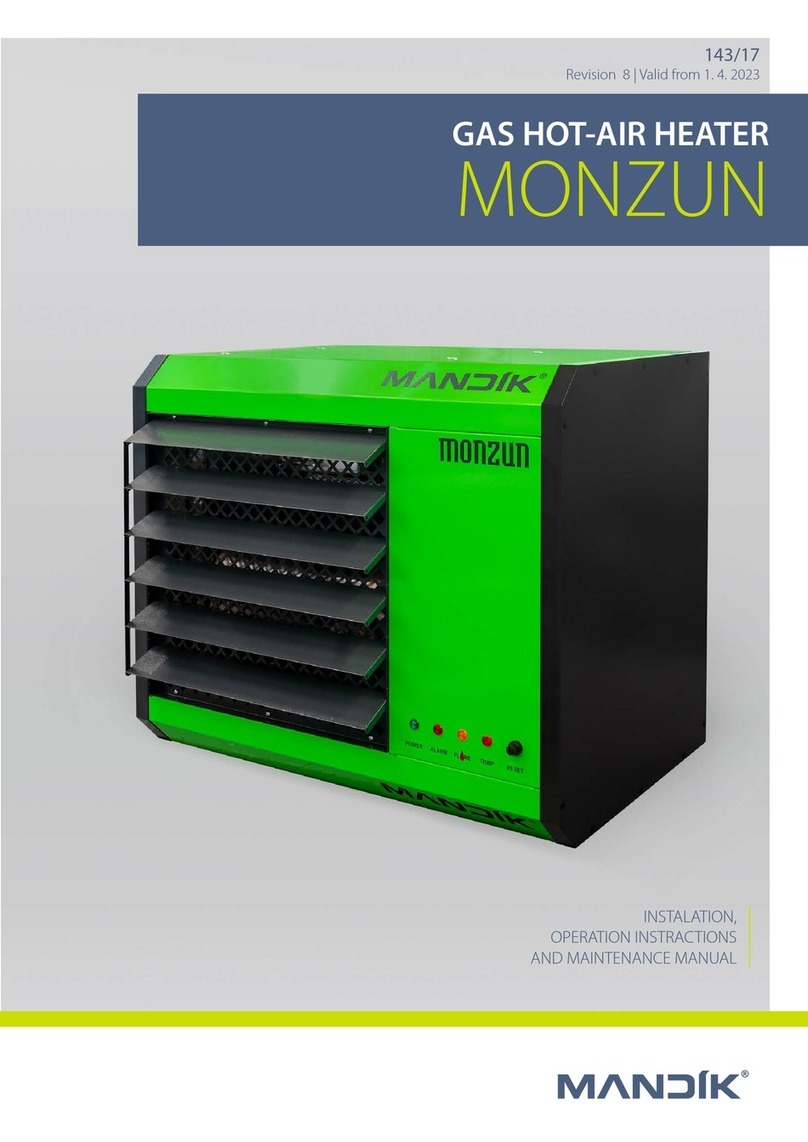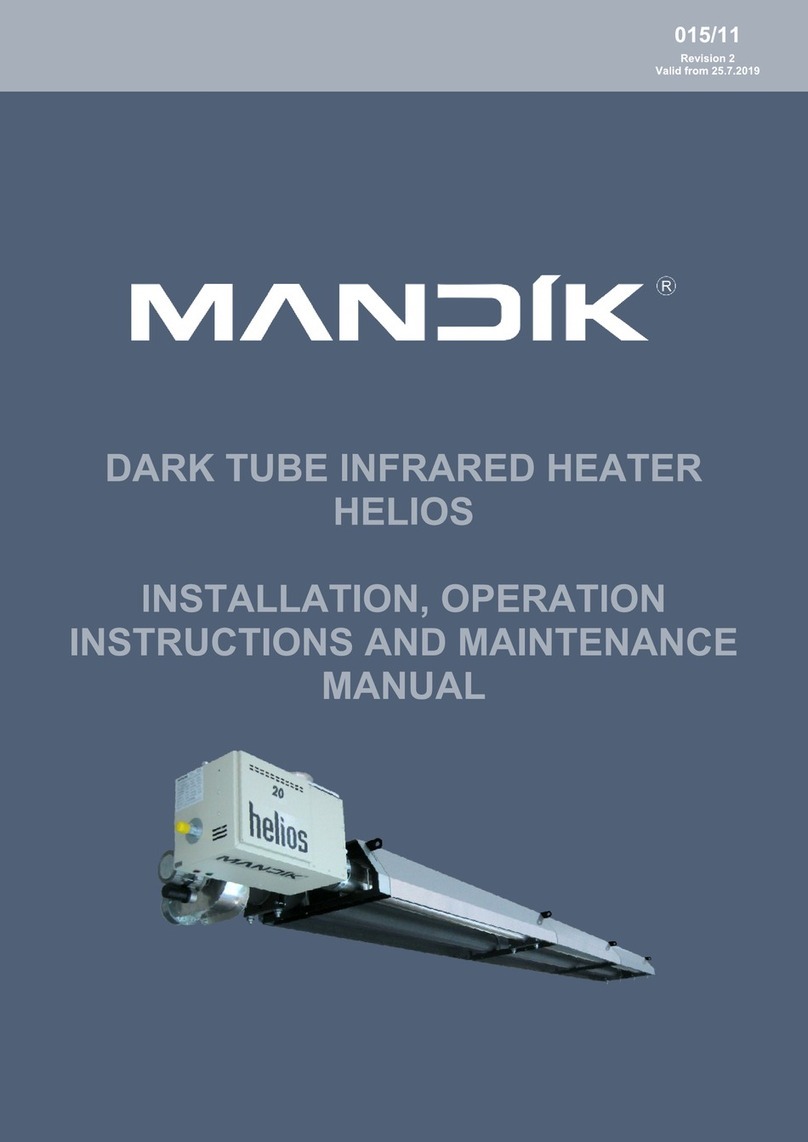
Dark tube infrared heater HELIOS | Installation, operation instructions and maintenance manual.
4 |TP 015/11
I. GENERAL
Dark tube infrared heater HELIOS (On/O), HELIOS D (two-stage) and HELIOS M
(modulated) in the performance series from 10 to 50 kW is a modern ecological
gas heater.
In terms of operating temperature of active surfaces and thus in
terms of the particular wavelength of the emitted radiation, the
device belongs to the category of so-called ”dark“ infrared heat-
ers. The active surface is formed by radiant pipes and a reector.
In the radiant pipes there is the process of fuel gas burning and
there are also burnt gases owing through the pipes to the mouth
of the exhaust fan. Fuel burning is carried out by an atmospheric
burner which is automatically controlled. The reector prevents the
pipes from cooling by the process of convection. The reector itself
warms up by the radiant pipes and radiates the heat in the required
direction.
Normal operating fuel of the HELIOS infrared heaters:
– natural gas – NG (G20/G25)
– propane – P (G31)
Product category:
– II2E3B/P
, II2ELL3B/P
, design A2, B22, C12, C32, C62. NOXclass 3 (acc. EN 416-1/A1)
Infrared heaters HELIOS are intended for environment protected
against weather impacts with the classication of climatic condi-
tions class 3K5 acc. EN 60721-3-3 with temperature range from 0° to
35°C, for BNV premises acc. EN 1127-1. Installing infrared heaters as
design C is possible, except of normal spaces also in areas intended
for decommissioning and maintenance of vehicles. Such installation
must be assessed by the competent authorities in accordance with
the applicable regulations.,
Infrared heaters cannot be installed in individual, row and collective
garages, motor vehicle garages and operating rooms of fuel lling
stations with fuel dispensers. Infrared heaters cannot also be in-
stalled in places where there is a risk of re or explosion or high levels
of ammable dust.
Infrared heaters are suspended under the ceiling or on the walls in
the upper areas of the buildings so that the radiated beams point to
the oor towards the heated residential zone. The surfaces of oors,
walls, machines and other objects are heated by radiation and the
surrounding air is heated from them.
Infrared heater description
The infrared heater HELIOS consists of the following main parts:
– Burner box
– Exhaust box
– Reector with hinges and the radiant heating tubes ”U“ or ”I“
The basic design of the burner box is scalded by the throat for the
external suction in the upper part of the burner box. If the combus-
tion air supply system is not connected, it is an open gas appliance.
Thus, infrared heaters can only be used in a basic (normal) environ-
ment according to the according to the relevant standard. In order
to be considered as a closed gas appliance, the radiator must be
connected to outdoor air intake system.
Versions
According to power control of the burner, the infrared heaters
are single-stage I, U, LU, two-stage UD, LUD and modulating
UM, LUM.
Infrared heater with single-stage burner works in on-o mode.
Two-stage burner of the infrared heater operates in o mode
– reduced power – full power.
Modulated heater can vary the output as needed from minimum
to full.
The main advantages of the two-stage burner control include re-
ducing burner start-up frequency, better temperature distribution
in the heated space and reduced energy consumption. The mod-
ulated control of the burner is even more economical thanks to
asmooth change in performance.
Infrared heaters HELIOS are divided in terms of installation and
used reector:
– Ceiling infrared heaters with reectors tted with hinges in
version of hanging under the ceiling
– Wall infrared heaters with reectors tted with hinges
,,U(I)/15º, for hanging on the solid walls.
Reectors are supplied with thermal insulation, covered by a cover made of galvanized sheet metal.





























